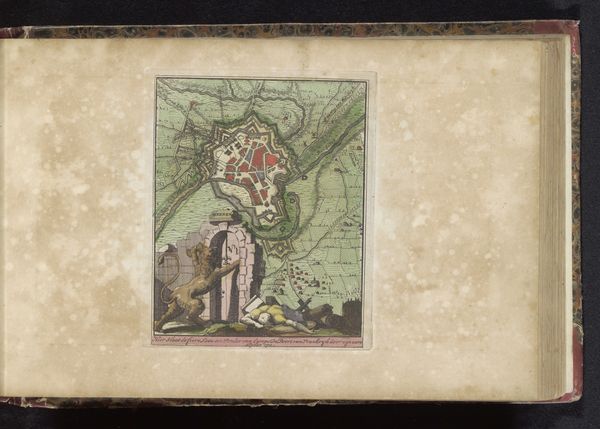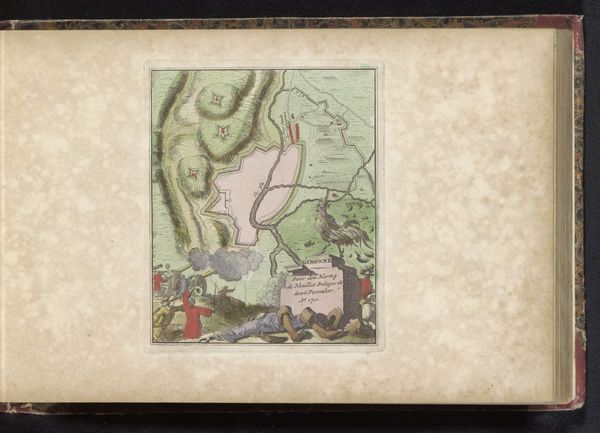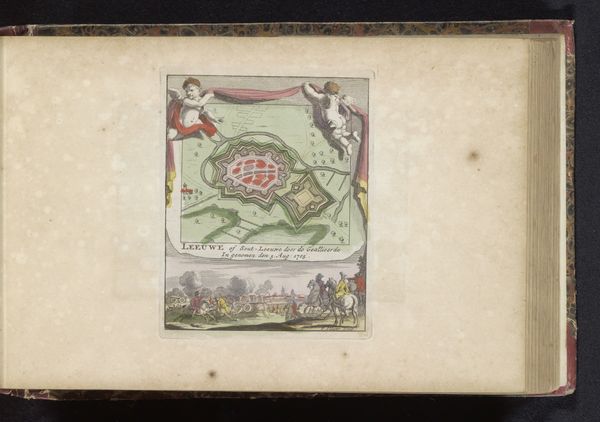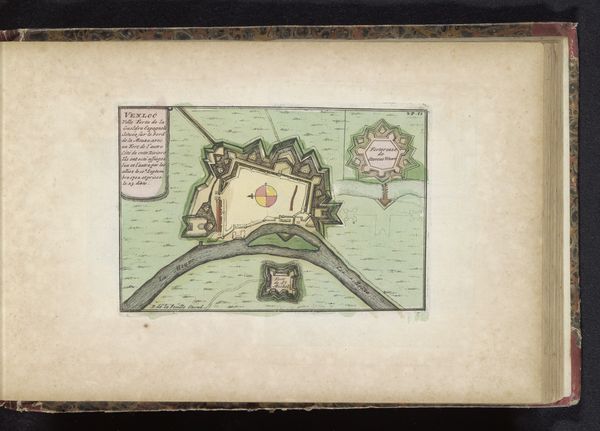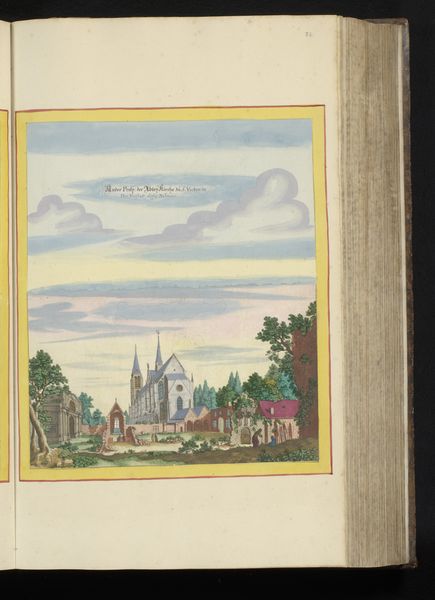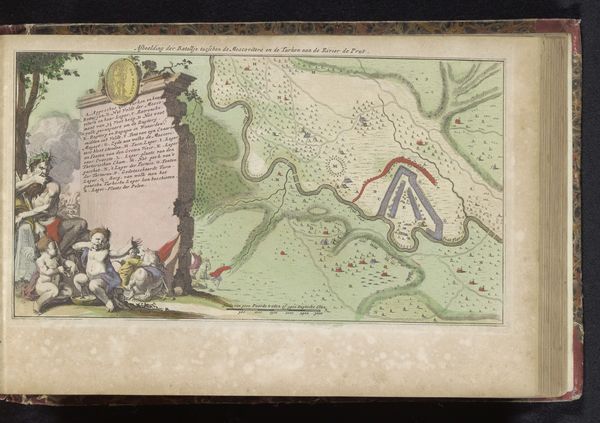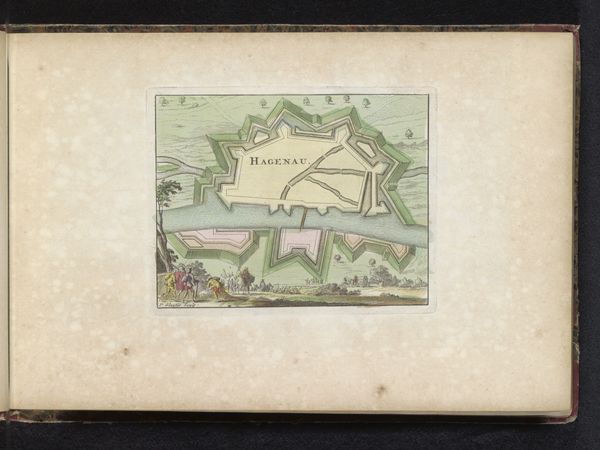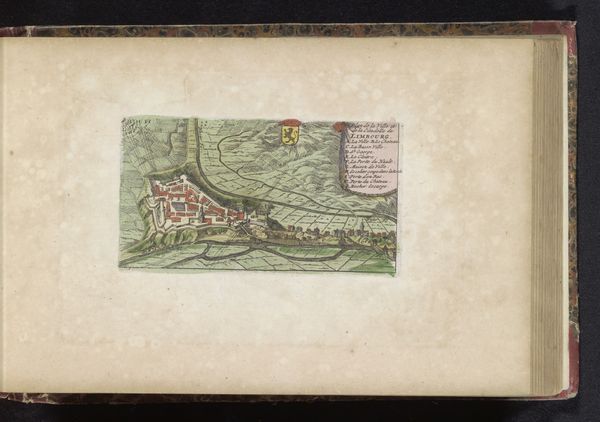
painting, watercolor
#
water colours
#
painting
#
watercolor
#
coloured pencil
#
genre-painting
#
history-painting
#
mixed media
Dimensions: height 153 mm, width 125 mm
Copyright: Rijks Museum: Open Domain
Curator: It looks like an illustration from a historical novel—full of tiny figures bustling about. Editor: Indeed. This is a work titled "Plattegrond van Lérida," made in 1735 by an anonymous artist. It’s a combination of genres, mixing landscape, cartography, and scenes from military life using watercolor and colored pencil. Curator: It’s fascinating how the cartographic aspect takes precedence. The landscape nearly overwhelms the figures down below. Look at how that Segre river snakes around—like a metallic ribbon dividing territories. Editor: Notice the tension in the spatial relationships. The map itself, which occupies the upper half, serves as a kind of omniscient backdrop, while the encampment scene is brought to life in the lower register. The two create a powerful disjunction. Curator: It’s true, there’s something detached and coldly analytical about it. What do you think it expresses? The map makes the events happening in the camp seem almost inconsequential. The real stakes appear to be those lines drawn in the territory above, almost abstract and intellectual in comparison to what’s happening on the ground, literally. Editor: Right. There's a dichotomy created by using two different scales and approaches; the macroscopic overview afforded by the map against the lived, messy reality. It’s as though the artist intended us to meditate on the differences between objective representations and subjective experience. Curator: I like your interpretation. So the artist is prompting us to acknowledge our limited viewpoint. As if to suggest all perspectives are shaped and incomplete. Editor: Perhaps, or to recognize the chasm that invariably separates representation and the 'real'. The flat, depersonalized lines and colors render the human dimension as incidental—as details contained and controlled by the cartographic framework. Curator: All this in one compact rendering. It speaks volumes about our ways of seeing and the choices we make when visually narrating the world around us. Editor: Precisely, prompting further exploration on the dynamics of visual storytelling through a very curious juxtaposition of form and content.
Comments
No comments
Be the first to comment and join the conversation on the ultimate creative platform.
